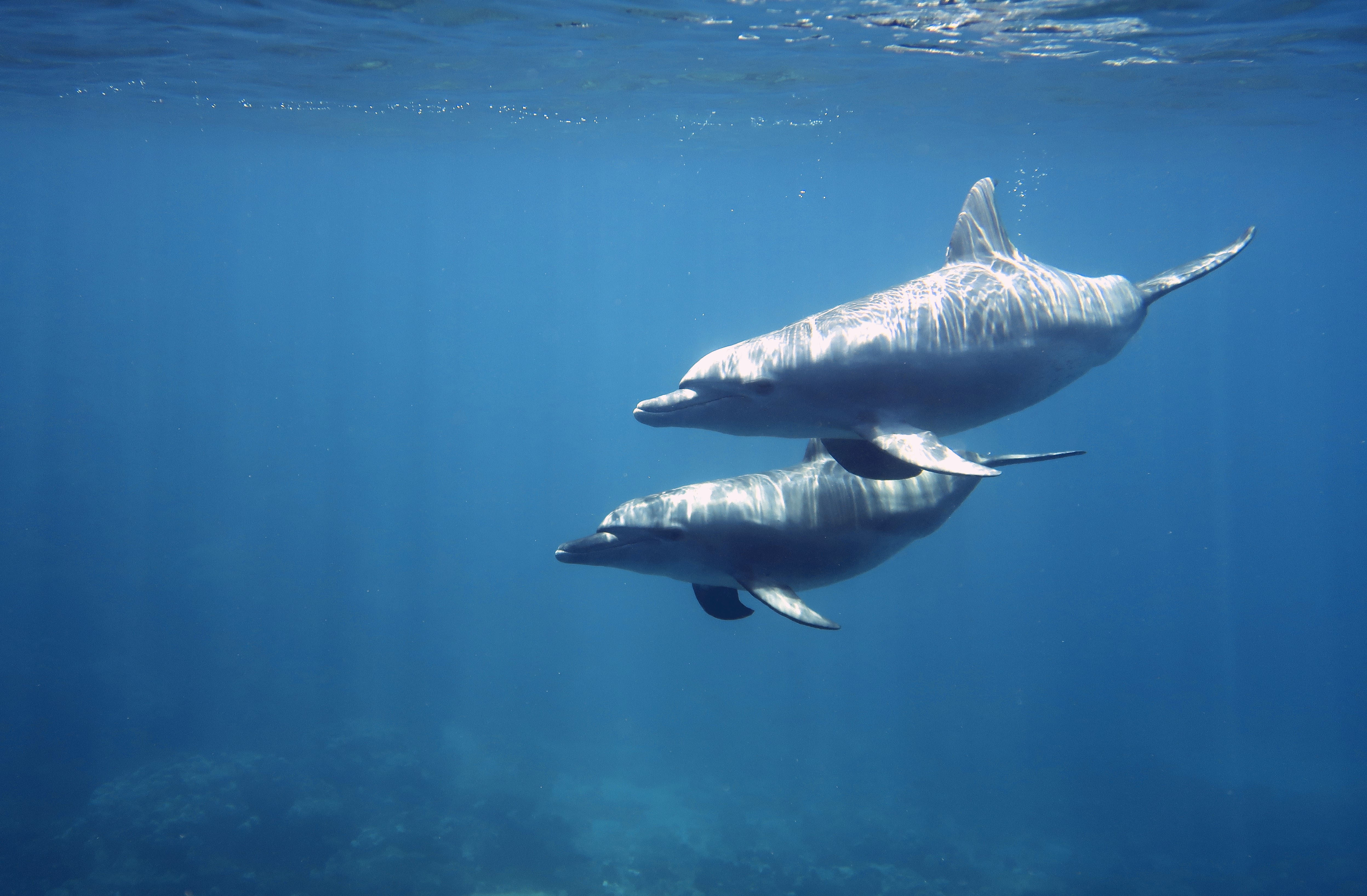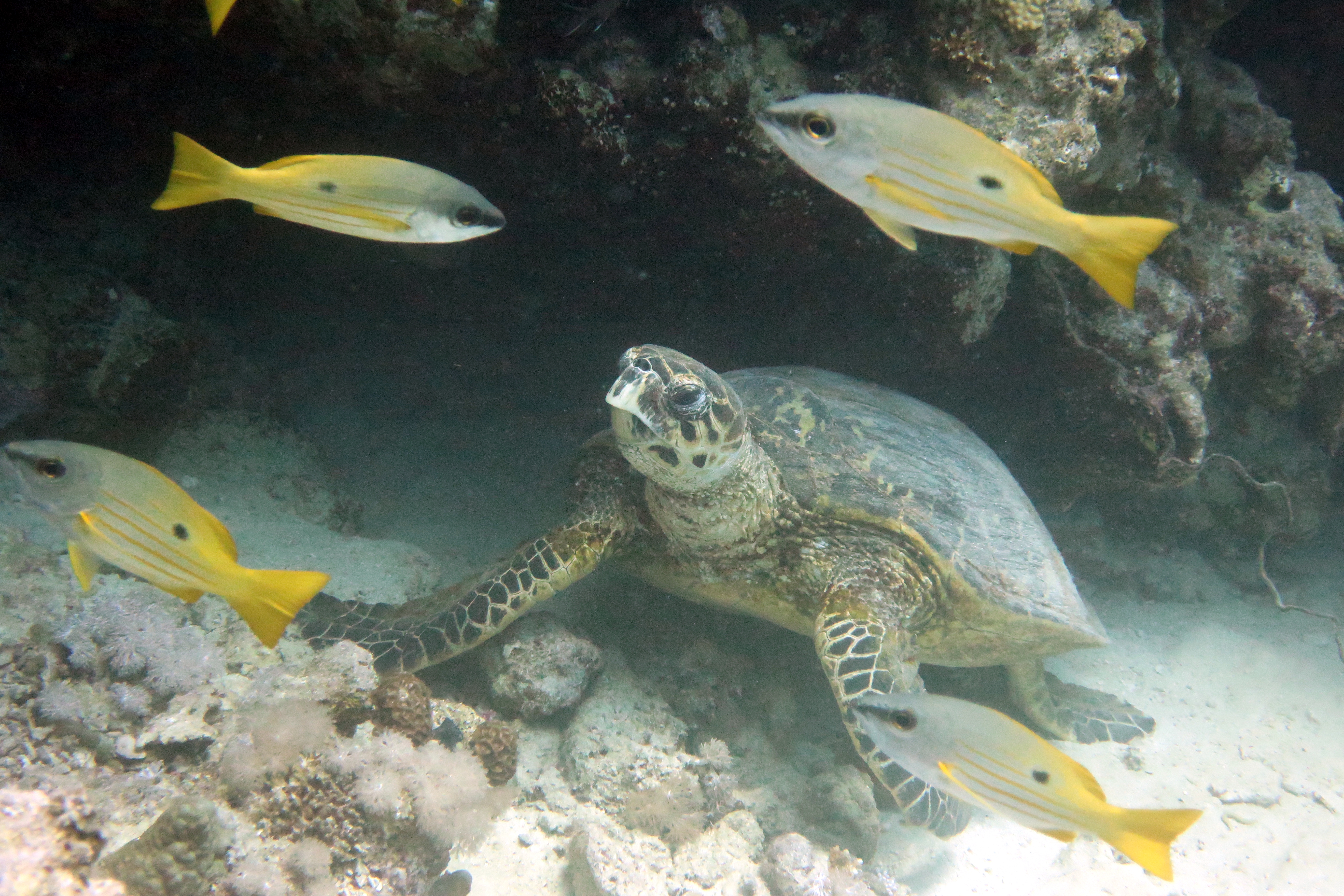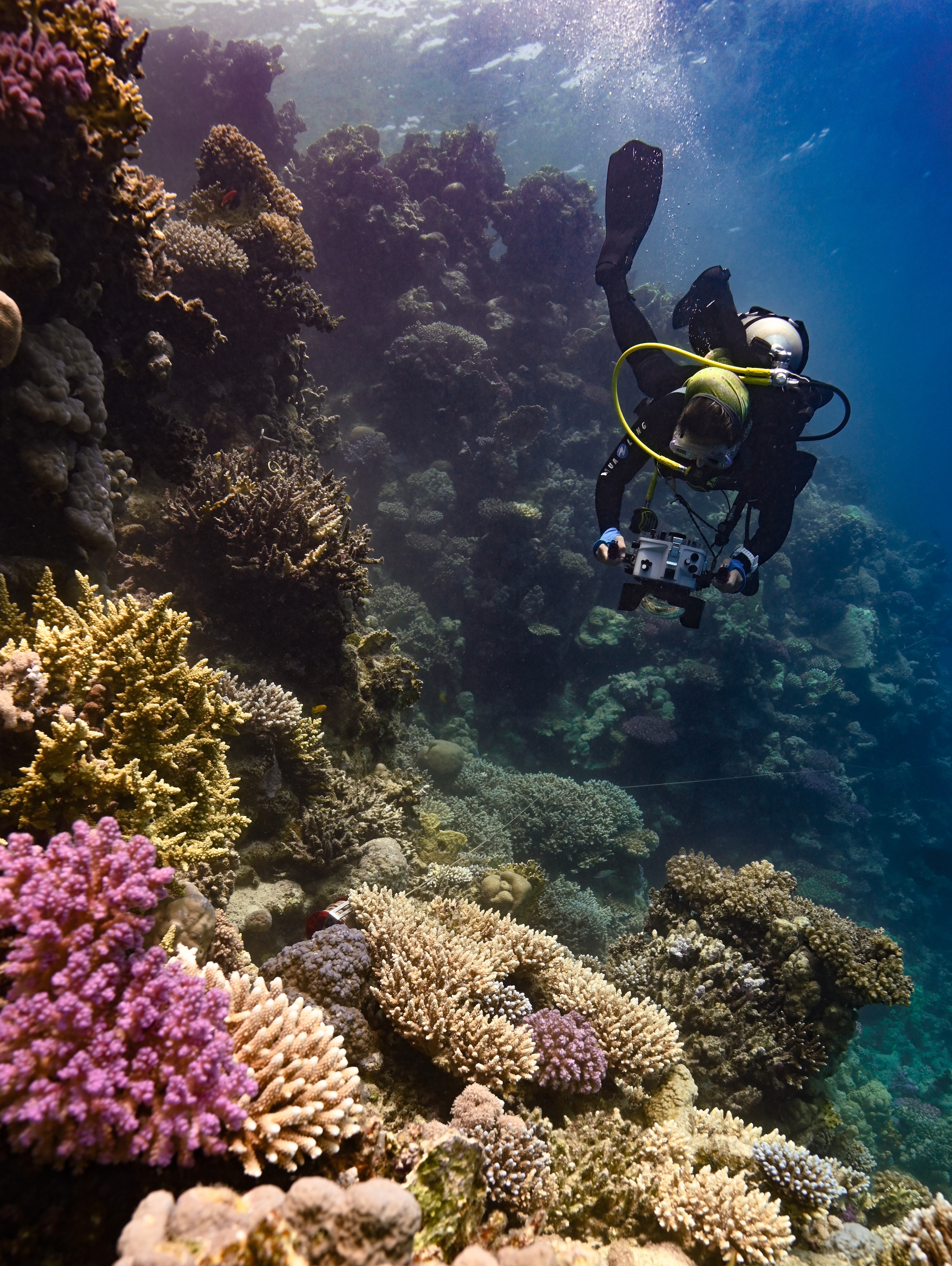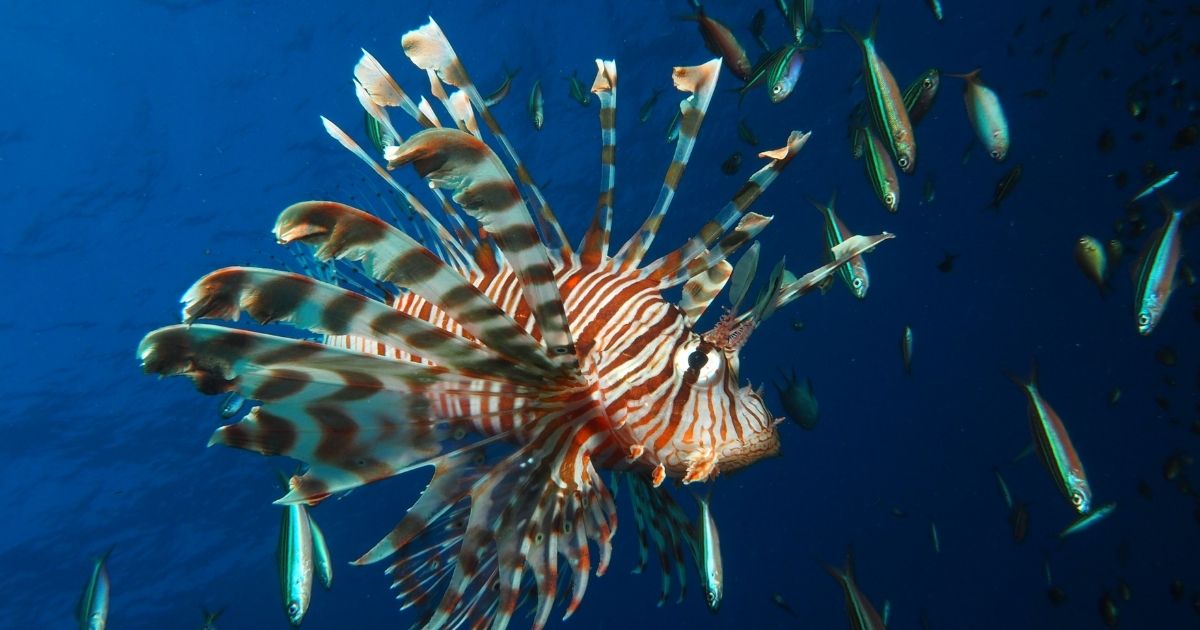- Eleven-month study by The Red Sea Development Company is the largest survey undertaken by a developer to assess and mitigate impact on wildlife ecosystems Survey sets a new benchmark for the industry in responsible and regenerative tourism and comes as part of a wider call to action for developers in the tourism and hospitality industry to protect environment and biodiversity
The Red Sea Development Company (TRSDC), the developer behind the world’s most ambitious regenerative tourism projects, The Red Sea Project and AMAALA, has released the findings of one of the world’s largest environmental surveys of wildlife ecosystems, carried out in the Red Sea area.
The study was released at the UN World Ocean Conference in Lisbon (27 June – 1 July), where the world’s leading scientists and Governmental organizations are meeting to mobilize for global ocean action.
 A pair of Dolphins observed in the Red Sea
A pair of Dolphins observed in the Red Sea
The eleven-month long research study along the Saudi Arabian coast revealed an exceptionally rich diversity of habitats, flora, and fauna. These include a significant number of endangered and critically endangered species such as the Halavi Guitarfish, Hawksbill Sea Turtle and Sooty Falcon, as well as a thriving, eight-meter-high single coral colony estimated to be around 600 years old.
The survey conducted by TRSDC is by far the largest effort ever undertaken by a private development company to understand and assess a natural ecosystem ahead of and during development. It is more comparable to initiatives undertaken by Government agencies on a national scale. It serves a crucial purpose in creating a baseline understanding of the state of the local environment through analysis of the populations, behaviors, and habitats of the wildlife over 200km of vibrant Red Sea coastline within TRSDC’s flagship destination – The Red Sea Project.
“We want to prove to the world, and our peers in the tourism industry, that creating world-class destinations can go hand-in-hand with protecting and enhancing the environment. We’re challenging ourselves and others to do better and be better as global pioneers in responsible development and are issuing a call to action for tourism as an industry to step up when it comes to the impact on wildlife and biodiversity,” said John Pagano, CEO of TRSDC.
The research forms the marker against which TRSDC will measure progress towards its ambition to deliver meaningful net conservation benefits through biodiversity enhancement efforts and plays an important role in identifying and highlighting areas of environmental concern, and which require future mitigation and action.
“The Red Sea coast is a hidden gem of incredible natural beauty, with rich and thriving wildlife. As an organization with sustainability at our very core, it is our responsibility to not only protect, but to actively enhance and regenerate the natural ecosystems that exist here. To make this a reality, we want to transparently measure ourselves against our stringent environmental promises by establishing this baseline, and regularly reporting on progress,” Mr. Pagano added.
The tourism industry is one which places significant strain and stress on local land and marine areas. UN Environment research shows that the growth of tourism and its impact on environment is growing at an unsustainable rate, with a 154 percent increase in energy consumption, 131 percent increase in greenhouse gas emissions, and 152 percent increase in water consumption expected by 2050 if action is not taken.
TRSDC believes that more must be done by developers to ensure sustainability is embedded from the ground up, and that the environment, wildlife, and biodiversity, as well as the lives of those in local communities, are prioritized throughout development and eventual operations.
 The critically endangered Hawksbill Turtle resting in the Red Sea
The critically endangered Hawksbill Turtle resting in the Red Sea
Key Findings:
The survey along the Red Sea coast, conducted from January through to November 2021, revealed that many threatened and endangered species inhabit the area – highlighting the importance of environmental protection and regeneration efforts by TRSDC and others in the region. Key findings include:
Coral reef fish and their habitats:
- Fish & habitat were surveyed at nearly 300 coral reef sites. More than 300,000 fish were counted of 280 different species.
- Machine learning technology was successfully used to automatically analyze coral reef survey imagery. This tool generates data comparable to that produced by expert human analysts with >90% less time to analyze and receive data. Without that technology, it would not have been feasible to survey at this scale.
- Condition of coral habitats documented across all complex shallow reef system encompassing ~100 km2 of reef habitat. Although conditions of reefs varied, highest quality reefs were outer reef walls and crests. Highest coral cover at any site was >70% outside Ummahat Island.
- Many enormous corals were found throughout the project area, particularly around Mardunah and Waqadi Islands. The largest colony encountered was over eight meters in height and estimated to be over six centuries old.
- Fish assemblage highlights included discovery of locations of spawning aggregations for snapper and emperor, and regular encounters with schools of up to 100 Bumphead Parrotfish – the world’s largest parrotfish- listed as vulnerable, and rarely encountered in such large groups across most of their range.
Bird populations:
- around 25,000 breeding pairs were counted of 14 surveyed species.
- the most widespread were the White-cheeked Tern and the Osprey (each breeding on more than half of the 92 surveyed islands).
- most notable of the findings was the importance of the area for Sooty Falcon, a vulnerable species with declining global population numbers, but breeding in high numbers on some Red Sea Project Islands
- The 41 breeding pairs of sooty falcons represented 34% of the Saudi Red Sea population (~120 pairs) and 2% of the entire world’s population (~2,000 pairs)
Megafauna species:
- close to 200 nests of the critically endangered Hawksbill turtle
- numerous sightings of the endangered Indian Ocean Humpback Dolphin, and eight different species of sharks, including the endangered Whale and Zebra sharks.
- significant numbers of the Halavi Guitarfish – an endemic species of ray classed as critically endangered
- the observation of calves and young individuals of several species of shark, ray, and dolphin, indicating the presence of important nursery areas in the region that will be essential to the breeding success and protection of these species
 TRSDC diver Dr Rhonda Suka conducting SFM survey
TRSDC diver Dr Rhonda Suka conducting SFM survey
Additional Observations:
The Red Sea is believed to host the world’s third largest population of Dugongs, after Australia and the Arabian Gulf. The most recent region wide survey was more than 30 years ago, and the lack of comprehensive studies into the species in the Saudi Arabian Red Sea makes this a high priority for us. During 2021, the team sighted Dugong on 10 occasions, including one mother and calf.
The number of nesting sea turtles are known to vary quite considerably from year to year, emphasizing the need for long-term monitoring. Notably the team has observed much higher numbers of nests in surveys in the early part of this year.
Due to the importance of our site for Sooty Falcon, TRSDC scientists are conducting telemetry studies of their habitat use and long-distance migrations. We are also trialing different designs of nest boxes for this species – with the goal of increasing the opportunities for this species to find suitable nesting and successfully breed at our site.
Additionally, while much of the Red Sea coast is in excellent condition and home to thriving wildlife, the survey unearthed evidence of some earlier impacts in a few areas (pre-dating TRSDC development). This is a clear reminder that these environments are dynamic and full of potential, but also vulnerable to change, and needing careful management.
Moving Forwards:
While this initial research provides crucial and immediate data on wildlife in the region, it also sets a benchmark for future reporting. TRSDC plans to undertake regular surveys of similar size and scale to establish trends and analyze impact over time, as part of a long-running commitment to its ambitious regenerative goals. This will allow the organization to track progress against key environmental promises, and progress in the enhancement of key habitats crucial to biodiversity across the destination.
“Our initial survey has not only provided us with an essential baseline understanding of the rich diversity of wildlife in our area of the Red Sea region of Saudi Arabia but has unearthed findings of great importance. So, being part of an organization that is taking tangible and measurable steps to conserve and enhance ecosystems at such scale is hugely exciting and fascinating. This work, and the future work that will follow, will be instrumental in our ability to estimate the impact of marine protection and enhancement efforts being considered and all Knowledge gained, and lessons learned will be shared with the rest of the world, inspiring others, and supporting the conservation and enhancement of ecosystems globally” said Dr Omar Al Attas, Head of Environmental Sustainability at TRSDC.





